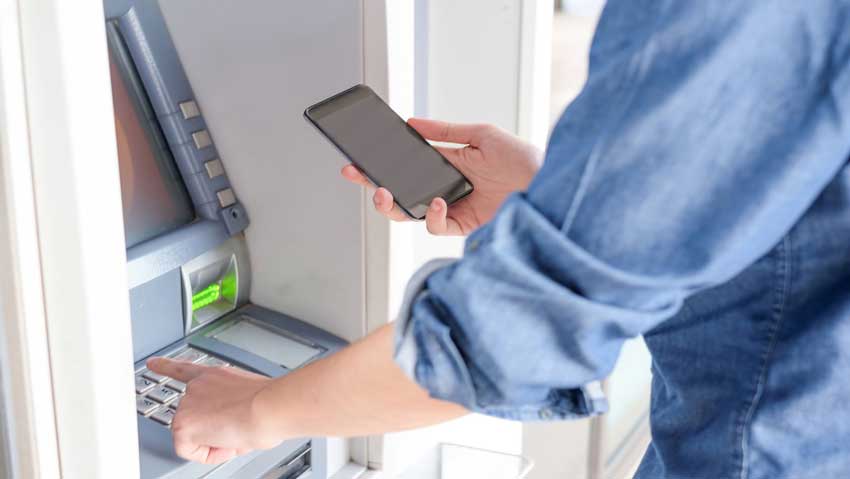The number of ATMs providing the option of cardless withdrawals rose 26% in 2019, says a new report from research firm RBR. Leading the charge in the adoption of cardless ATMs is the United States, where the number of these machines has more than tripled, according to the research.
Bank of America was the first to enable cardless cash withdrawals at ATMs in June 2016. Wells Fargo retrofitted a portion of its ATMs for these withdrawals, and in 2017 Chase and Capital One deployed cardless ATMs. PNC Bank introduced cardless cash withdrawals at its ATMs in 2018, says London-based RBR.

Cardless ATMs can work in several ways. They can use near field communication card readers to scan debit cards stored in digital wallets, or they can display Quick Response codes that users scan after opening a mobile-banking app. Single-use PINs or biometric identification can also be used to initiate a cardless transaction. Next, the consumer enters her PIN, then enters the amount to be withdrawn and the account from which the withdrawal is to be made.
Adoption of cardless ATMs is being driven by customer convenience and security, as cardless withdrawals reduce the time spent at an ATM and remove the risk of card skimming, says Rowan Berridge, an associate with RBR and project manager for the report.
“All the main banks, regional banks, and largest [independent ATM deployers] in the U.S. have adopted this technology,” Berridge says. “Cardless technology offers a secure alternative that can be sold to customers as a better experience.”
While deployment of cardless ATMs was well under way in the U.S. before the Covid-19 pandemic, the disease, which leaves consumers reluctant to touch public surfaces, has accelerated the need for the technology.
“Nearly all of the top banks in the U.S. introduced cardless ATM transactions well before Covid-19, but volumes will become increasingly meaningful going forward,” says ATM consultant Sam Ditzion, chief executive of Boston-based Tremont Capital Group. “Adoption has accelerated significantly in the wake of Covid 19.”
Outside the U.S., the number of ATMs offering cardless cash withdrawals increased by 10%, according to RBR.
Another driver of cardless ATM deployment in the U.S. is banks’ growing investment in NFC technology, RBR says. “Google Pay, Apple Pay, and other proprietary mobile platforms have become more widely used in the U.S., more so than contactless cards, owing to both the continued strength of cash and the costs for card issuers adapting to EMV standards,” the report says. “Chase and Wells Fargo have at least some ATMs that support Google Pay and Apple Pay. Fifth Third Bank is a notable example of a top-25 bank announcing plans for introducing QR-code technology at its ATMs, which can be used together with the Fifth Third Bank mobile app that can be used to dispense cash at any of its ATMs.”
While cost can be a factor in an ATM deployer’s decision to adopt new technology, such as EMV, it is not an overriding factor for cardless ATMs. “The incremental cost is not material on a new machine and the upgrade cost on a relatively new, existing machine is fairly low, as it consists of an NFC reader and software integration,” says Ditzion.




